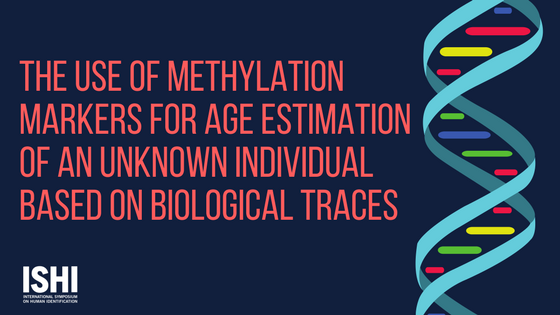According to public data form e.g. UK database around 30% of DNA profiles generated do not return a match from a database search. In many countries the percentage is much higher. In such cases additional phenotype data which could be derived from the genomic sequences are helpful in investigators profiling. Recently it has become feasible to obtain information about the age of the person from whom the genetic material was originating.
This technology is based on the observation that the epigenetic markers, namely methylation level of selected CpG loci in human genomes, correlated with the human age.
Submitted by: Anke Prochnow, QIAGEN
We have selected and validated a set of five epigenetic markers and an algorithm which facilitated the age prediction based on the methylation level of those markers. The sample workflow and lab procedure were also developed to ensure the methylation level could be measured in a reproducible manner.
Based both on our own laboratory’s and on published data, the pyrosequencing methodology was selected for the methylation level determination in a reproducible and time and cost effective manner. QIAGEN’s bisulfite conversion and Pyrosequencing kits and Q24 Pyrosequencing platform were used.
Analyzing DNA methylation at five markers located in ELOVL2, C1orf132, TRIM59, KLF14 and FHL2 facilitates human chronological age prediction with ±3.9 years accuracy on average in the whole age range 2-75 years old. However, much better age prediction was observed for the youngest age group. For example up to 40 years old the prediction variability measured by MAD was just below 3 years and for the age group 40-60 about 3.5 years. That was reflected by 78.3% correct age predictions (±5 years) in subjects aged 2–59 years and 50% correct age prediction for subjects between 60–75 years old.
We believe the algorithm correlating the age based on DNA methylation of the five selected markers, together with optimized Pyrosequencing assays provides a valuable tool for forensic age prediction.
The data shown here confirmed that it is possible to determine the age of the individual leaving the crime stain through bisulfite conversion and Pyrosequencing. Armed with this additional intelligence, one may narrow down a list of suspects and increase the chances of solving the “unsolved” up to now cases or speed up exiting investigations.
One may narrow list of suspects, increase chances of solving the unsolved, or speed up investigations. Share on X
Evaluation of the tissue type, health conditions, environment and life style on the prediction accuracy is necessary to make this assay a more reliable forensic tool .
We believe that in the future this kind of study could make possible further “extended phenotyping” including determination of the individual pervious exposure to specific environmental conditions (for example air pollution), life style health conditions.
Key collaborators on this project include: Dr. Renata Zbieć-Piekarska, Dr. Magdalena Spólnicka, Anna Pałeczka, Żanetta Makowska (Central Forensic Laboratory of Polish Police in Warsaw, Poland), Dr. Tomasz Kupiec, Agnieszka Parys- Proszek, Prof. Wojciech Branicki (The Institute of Forensic Research in Kraków, Poland), Prof. Rafał Płoski (Warsaw Medical University), K. Elliott (QIAGEN), and Krzysztof Kucharczyk (BioVectis, Poland).
WOULD YOU LIKE TO SEE MORE ARTICLES LIKE THIS? SUBSCRIBE TO THE ISHI BLOG BELOW!

